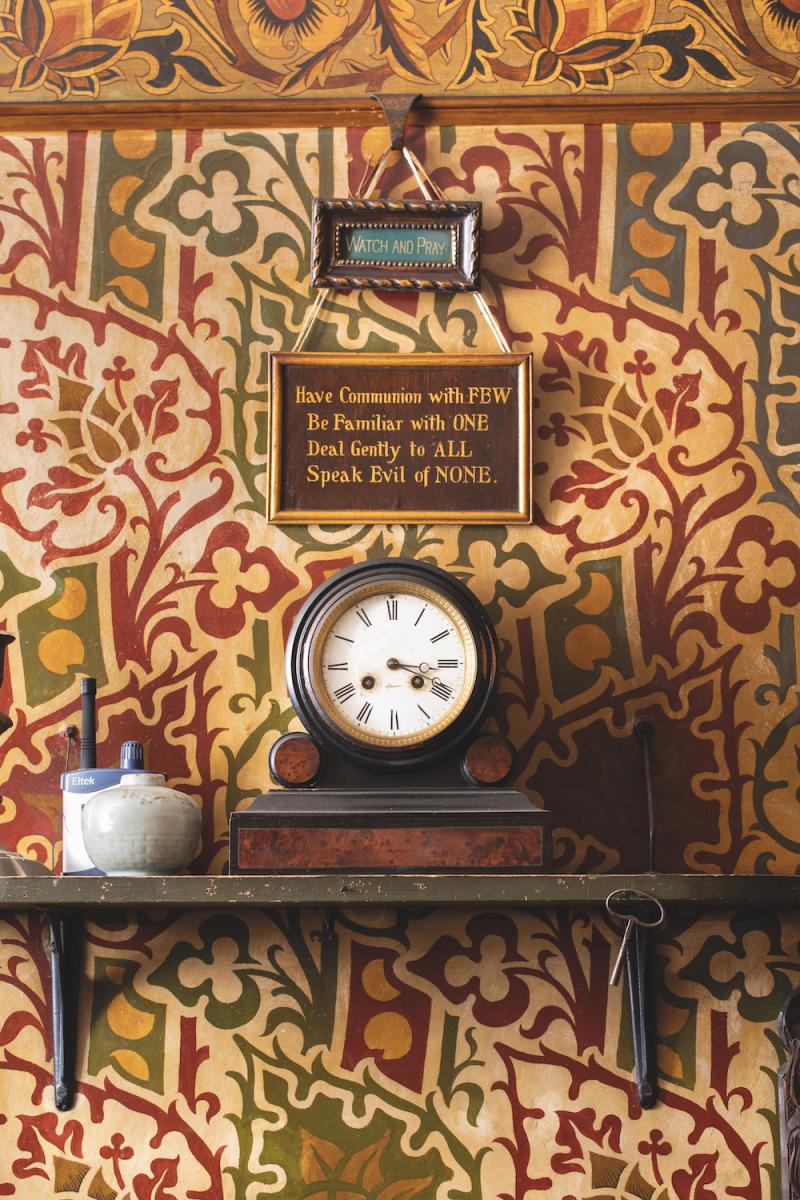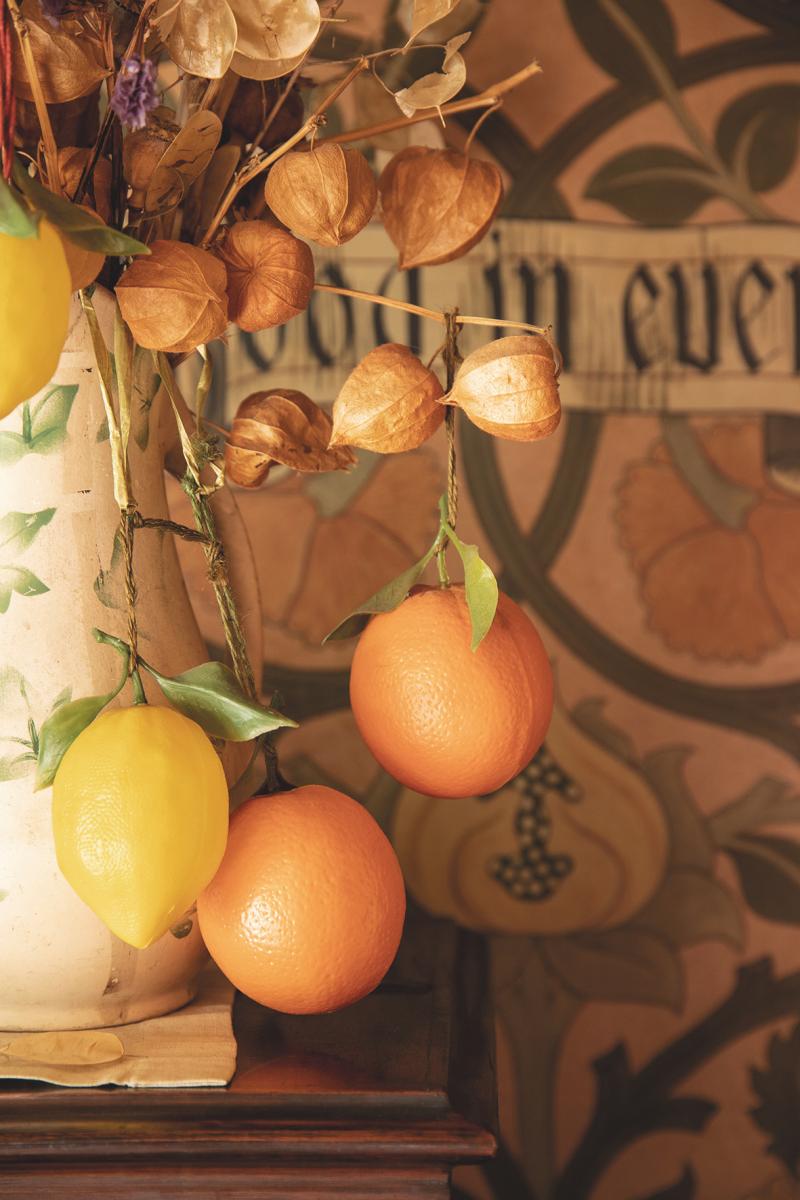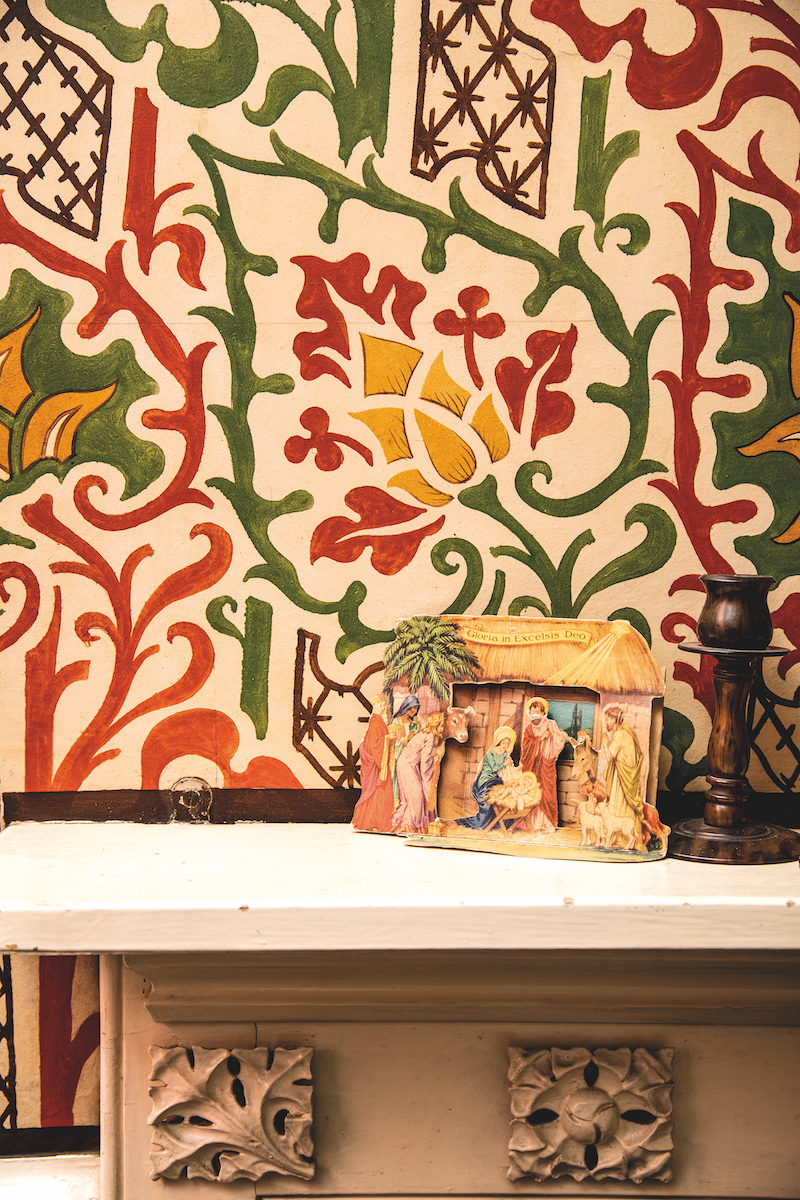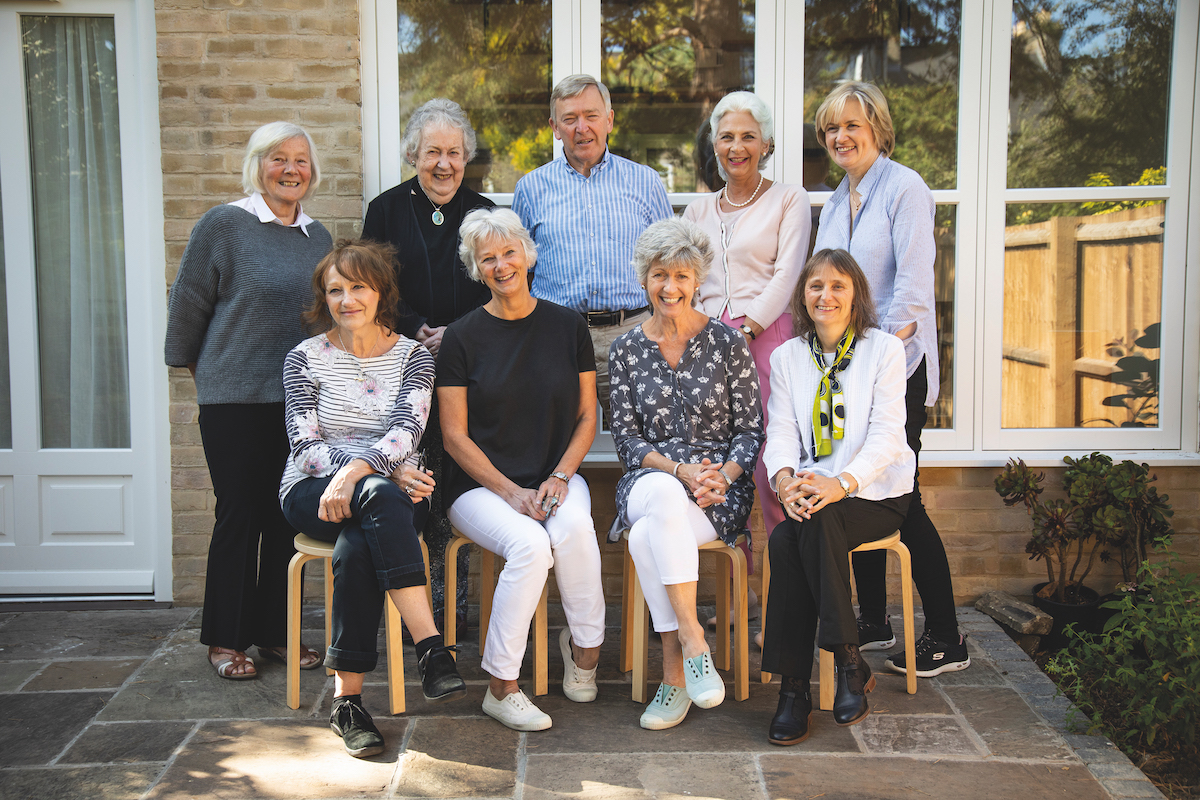This wonderful Cornish workshop and museum is dedicated to the legacy of studio pottery trailblazer Bernard Leach
Discover Cambridge's Best-Kept Secret: Mr Parr's House
Discover Cambridge's Best-Kept Secret: Mr Parr's House
1 Dec 2019
For years, David Parr House was one of Cambridge’s secrets. Now, with the help of volunteers, including those from The Arts Society, this modest house with remarkable interiors has been saved. Here’s how they did it.
Images © Cristian Barnett
Who Was David Parr?
David Parr was a Victorian decorative artist who worked for FR Leach, undertaking commissions from arts and crafts giants such as William Morris and George Bodley and decorating our finest churches and stately spaces. On his return home to his terraced house in Cambridge, he couldn’t stop painting, spending some 40 years adorning his home with stylised Gothic Revival reds, greens and golds, and Shakespearean quotes incorporated into elaborate scrolls.
Why did the house remain secret?
Few people knew of the treasures within Mr Parr’s house during his lifetime. Purchased in 1886, 186 Gwydir Street remained in the family until 2013. From 1927 to that time, it was lived in by Parr’s granddaughter, Elsie Palmer, who brought up her family there. She barely altered her grandfather’s exotic patterns because, simply, she loved what he had made.
When was it discovered?
Tamsin Wimhurst, a social historian and now chair of the David Parr House Trust, recognised the house’s importance after a tip-off from Elsie’s neighbour, whom she met while curating the 2009 exhibition A Space of Our Own in Cambridge. She made a visit, totally unprepared for what she was to see. ‘Here was this poetic set of rooms, created as a beautiful inner sanctum – and the amazing thing was that they had survived,’ Tamsin says. ‘This decoration was cutting-edge when David Parr painted it. We’ve seen these designs in important spaces: but how often have we seen them in a worker’s home such as this? And when, under such circumstances, preserved to this quality?’ As a result of her intervention – and passion – the house was purchased. Since then, with a tiny team, scrabbling for grants and seeking donors, it has been conserved, and a welcome and workshop space created next door. Last May, the house opened for tours.
How have volunteers been involved?
Among the some 60 people who have given – and are giving – their time are Heritage Volunteers from The Arts Society Cambridge and The Arts Society CANTAB, another Society there. ‘The first group of volunteers to arrive were the “Dusting Divas”,’ says Dr Shelley Lockwood, audiences and volunteer manager. ‘They not only dusted, but painstakingly photographed and recorded every object in the house to help us develop a way of cataloguing the collection.’ Those objects ranged from the piano to false teeth and plastic fruit.
Today, volunteers at David Parr House make up a garden team, researchers, outreach and events volunteers and house guides, all of whom work towards a better understanding of this fantastic home. ‘Our guides – a quarter of whom are Members of The Arts Society – are at the heart of what we do,’ Shelley explains. ‘They bring the stories of the house to life.’
Back row from left: Members of The Arts Society CANTAB Diane Heard and Pam Lankin; Members of The Arts Society Cambridge Max Field, Jackie Ball and Julia Proctor. From row from left: Joni Metcalfe, Vicky Field, Pat Robinson and Karen Tiley.
How has the house been conserved?
In 2017, more than 5,000 items were taken out of the house, ready for conservation. Over 10 months ‘every item was cleaned, condition-checked, measured and catalogued and the data uploaded onto a digital asset management system,’ according to Shelley. After the house was made weathertight and the precious wall paintings were conserved by experts, each piece was returned, by volunteers, to its original place.
Volunteers also carried out an archaeological dig in the garden, unearthing ancient shards, a 1950s Enid Blyton Magazine Club badge, a Mr Potato Head’s foot and the skeletons of family guinea pigs. When the dig was complete, volunteers replanted the gardens front and back, recreating the look, as closely as possible, of what would have been at the fore when David and Mary Jane Parr planted and, at the back, when Elsie and her husband Alfred were raising their daughters in the post-World War II period.
VISIT
For more information on David Parr House and to book a tour, see davidparrhouse.org. To find out about ways to get involved at the house, email volunteer@davidparrhouse.org
There are ambitions to create a £1m endowment fund for the house; for more information, email rachel@davidparrhouse.org
REGISTER
To register as an Arts Society Heritage Volunteer, contact your local Society or email volunteering@theartssociety.org
SIGN UP
Read an in-depth feature on David Parr’s House and the work of volunteers in the winter issue of The Arts Society Magazine. To enjoy a subscription, packed with exclusive features, interviews, news and opinions from the arts world join The Arts Society as a Member or as a Supporter.
About the Author
The Arts Society
JOIN OUR MAILING LIST
Become an instant expert!
Find out more about the arts by becoming a Supporter of The Arts Society.
For just £20 a year you will receive invitations to exclusive member events and courses, special offers and concessions, our regular newsletter and our beautiful arts magazine, full of news, views, events and artist profiles.
FIND YOUR NEAREST SOCIETY
MORE FEATURES
Ever wanted to write a crime novel? As Britain’s annual crime writing festival opens, we uncover some top leads
It’s just 10 days until the Summer Olympic Games open in Paris. To mark the moment, Simon Inglis reveals how art and design play a key part in this, the world’s most spectacular multi-sport competition







